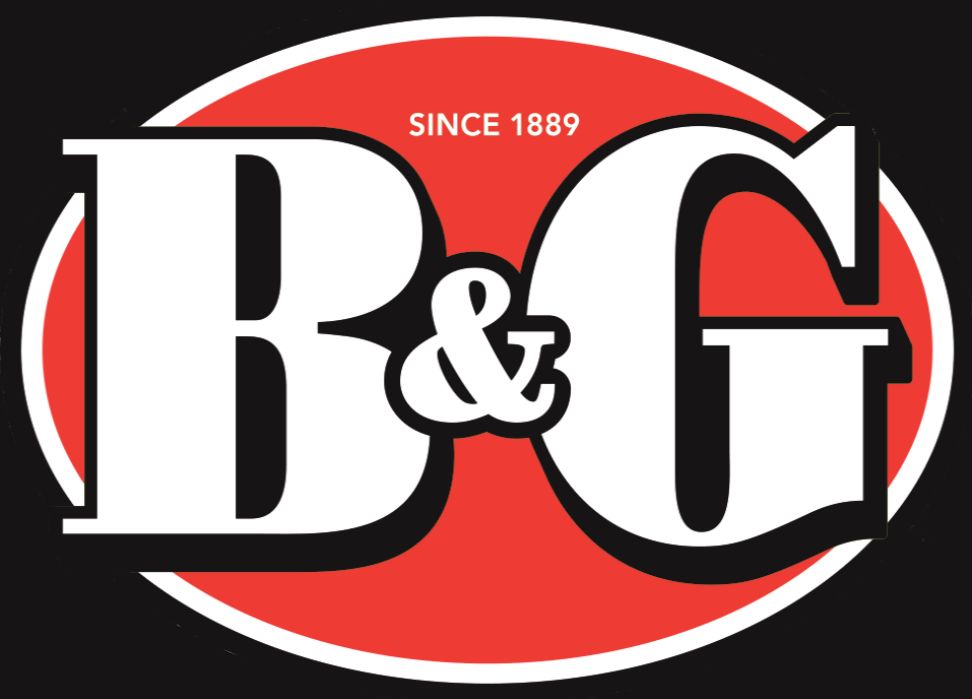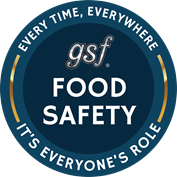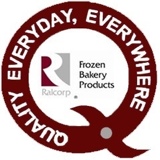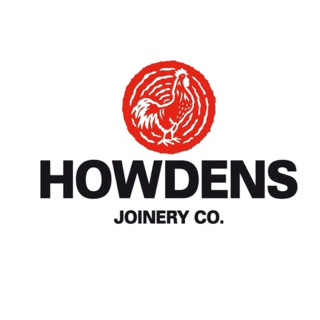Title Page
-
Supplier (Name, ID)
-
Audit Location
-
Packaging Type
-
Supplier Primary Contact
-
Opening Meeting Attendee(s)
-
Closing Meeting Attendee(s)
-
Conducted on
-
Lead Auditor
B&G Information
-
Which B&G facilities/copackers are supplied by this packaging facility?
-
How many SKUs of material are purchased by B&G from this packaging facility? (List SKUs or bring Excel list)
-
How many NCMRs are generated from this packaging facility within the last year?
Score & Rating info
-
Audit Assessment Explanation:
a. Compliant - Requirements are fully implemented.
b. Non-compliant - Requirements are not implemented.
c. N/A - Not applicable to the facility -
Final Audit Score/Supplier Classification Explanation: a. Approved: 100% - 80%
b. Conditional: 79% - 70%
c. Disqualified: <69% -
Timeframe to submit required Corrective and Preventive Actions (CAPA) to B&G Auditor after receipt of Audit Report:
Submit CAPA within 90 calendar days
-
This audit follows the process from receiving, batching, processing, QC testing, and shipping. The scope of audit includes all processes producing products for B&G; evidence of program management is reviewed throughout the entire audit.
Process Flows
-
Are process flows available for each process within the facility and do they include rework, waste, and critical aspects such as CCPs?
-
Are processes are in place for change control and management of change onsite? Look for evidence of program management.
-
Is an effective process in place for management of rework? Review the program and look for evidence of rework during the facility walkthrough.
Raw Materials and Receiving
-
How are raw materials received into the facility?
- Bulk Tanker and/or Railcar
- Tractor Trailer - both LTL and FTL
- Other: Describe
-
Is the incoming material receipt process documented with sufficient evidence to prevent food fraud, pest infestation, and maintain integrity/traceability of the downstream products?
-
Where are materials moved after receiving?
-
If non-conforming materials are accepted into the facility, is there a dedicated hold area to prevent use downstream in manufacturing?
-
Assess the general cleanliness, pest control, and GMPs within the receiving area and surrounding warehouses. If areas are at risk, document incidents.
Processing/Manufacturing
-
Walk the processing and manufacturing areas. Look for evidence of equipment maintenance, facility upkeep, cleanliness, record keeping, specification adherence, pest control, work instructions, and rework.
-
During the walkthrough, was there evidence of Loose, deteriorated, or damaged objects on and above structures and equipment?
-
Review the facility GMP inspection. Is there work orders in place to remove, replace or repair loose, deteriorated or damaged object?
-
During the inspection, was there any signs of glass, wood, ceramic, or fragile plastic items in a state of disrepair that could possibly pose a risk of product contamination?
-
During the walkthrough, was there evidence of equipment maintenance concerns? If so, mark as At Risk and further review the site Maintenance Program.
-
Review the maintenance program. Does the site have preventive maintenance, temporary repair management, effective handoff post-maintenance, and qualification processes for new equipment?
-
During the walkthrough, was there evidence of poor facility cleanliness? If yes, mark as At Risk and further review the site Sanitation program.
-
Review the sanitation program onsite. Are SSOPs available for equipment and facility cleaning? Does the site have Master Sanitation Schedule in place to maintain peripheral areas and equipment?
-
The facility's pallets (wood, plastic, or metal) shall:
a. Be clean and free from debris.
b. Be free from insects or rodents evidence (e.g., cobwebs).
c. Be in good repair and condition. -
During the walkthrough, was there evidence of Wooden pallets in poor condition?
-
Does the site have a Wood Pallet Control Policy or risk assessment in place?
-
During the walkthrough, was there evidence of contamination incidents?
-
Was the affected product isolated, inspected, reworked, or disposed of?
-
During the walkthrough, review multiple sets of production batching paperwork. Ask the operators questions about the production paperwork, parameters, job requirements/work instructions, and what to do in case of deviations. Record observations from paperwork review and interviews.
-
Facility has a policy in place for Knives and cutting tools and it includes:<br>a. Are controlled, kept clean, and well maintained so as not to present a hazard to raw materials, work-in progress, or food sector packaging. <br>b. Snap-off blades shall not be used in food sector packaging manufacturing, handling, or storage areas.
-
During the walkthrough, was there evidence of rework being utilized within the process? If so, review the rework program and if rework is correct per the process flow.
-
Is the rework program available to review, well-managed, and traceable?
-
During the walkthrough, review specification adherence and availability. Ask operators how specifications are accessed, what to do if parameters are out of specification, and how they are trained on specifications. Record observations from specification review and interviews.
-
During the walkthrough, observe materials within the Hold area. Pull at least 1 hold to review in detail.
-
Describe the hold material, reason, and process. Is the Hold and Release process sufficient to prevent accidental release of non-conforming materials?
QC Testing and Product Release
-
When are samples pulled in the process and sent to be internally evaluated for release?
-
Rate this step
-
What testing is performed within the onsite QC lab/area?
-
Rate this step
-
How is product pass/fail data communicated from the lab? Who is responsible for releasing batches?
-
Rate this step
-
Review employee training and qualification records. Are records available and complete?
-
Is equipment within the lab calibrated and maintained to an acceptable standard? (Validations, Qualifications, etc.)
Shipping
-
How are products released for shipment and where are outgoing loads staged within the warehouse?
-
Rate this step
-
Are trucks inspected and is this inspection documented prior to loading (both for FTL and LTL)?
-
Assess the general cleanliness, pest control, and GMPs within the shipping area and surrounding warehouses. If areas are at risk, document incidents.
Policies and Procedures
GMPs
-
The site shall ensure the applicable Good Manufacturing Practices are applied or exempted according to a written risk analysis outlining the justification for exemption or evidence of the effectiveness of alternative control measures to ensure that food safety is not compromised.
-
During the walkthrough, was there evidence of GMP adherence including hand washing (where required), uniforms, no external food and drink, and pest control?
-
Review the onsite GMP Policy and training program for GMPs. Does the site have an effective GMP program covering sanitation, pest control, and employee hygiene?
-
During the walkthrough, was there evidence of employees Eating, Drinking or Smoking in areas where food sector packaging is manufactured, handled, stored, or exposed?
-
Handwashing stations are provided in appropriate areas that support the capability of site personnel and visitors to wash their hands?
-
Signage is provided in appropriate languages instructing people to wash their hands before entering the food sector packaging manufacturing, handling, and storage areas?
-
Are all staff members strictly using the designated entrances when accessing production areas? Additionally, are all doors being kept closed at all times?
-
Are Raw and packaging materials, work-in-progress, and food packaging maintained appropriately, kept off the floor when applicable, and handled and stored in a manner to prevent damage and contamination?
-
Are there Procedures in place to prevent cross-contamination of food sector packaging from contaminated materials, cleaning agents, or chemicals?
-
The flow of personnel in food sector packaging manufacturing, storage, and handling areas shall be managed such that the potential for contamination is minimized.
-
The facility has a documented policy that covers all necessary aspects of a GMP Program.
-
The facility must have a written procedure for conducting Food Safety audits of their facility. Procedure includes: <br>a. Time of check and person responsible. <br>b. Inspection criteria (inside and outside). <br>c. Records of inspection and corrective actions.
-
Review an example of a recent GMP audit. Any findings on the audit have been corrected, or a corrective action has been submitted?<br>Example provided:<br>a. Includes the name of the person that completed the audit. <br>b. Has been completed in the past month.
-
Site has conducted a risk assessment for clothing and personal effects to assess the risk of clothing, hair, protective clothing, gloves, jewelry and other loose objects so as to not present a contamination risk to raw or packaging materials, w-i-p, and food packaging.
-
Justify exemption
HACCP and Food Safety
-
Does the site have a Food Safety and HACCP plan that encompasses: process flows, intended use, risk assessment, implemented controls, and monitoring/verification documentation?
-
If the site has Critical Control Points (CCPs), are these validated and monitored regularly?
-
If foreign material is designated a risk, describe the site's foreign material prevention program. Is it effective at reducing risk?
-
Has the site assessed chemical hazards associated with raw materials and process aides? Is the site compliant with recent PFAS regulations?
Training
-
Does the facility have a training program for new employees and for annual retraining? If yes, review the training program and document the themes. If no, document the deficiencies of the training program.
-
Review the training records of an Operations employee (preferably from the walkthrough interview) and a QC/Lab employee (preferably from the walkthrough interview). Are the training records available and complete?
Complaint Management
-
Does the site have a program for documenting, investigating, responding, and trending customer complaints?
-
What are the top 3 complaints and what actions have been taken onsite to correct and prevent the complaint root cause?
-
Rate this step
-
Corrective and Preventive Measures: How is the handling of corrective and preventive measures carried out? Is there an established program that includes root cause examination, details of the investigation, closure/responses, and assessments of effectiveness?
New Process Implementation and Commissioning
-
How does the site manage new product development, new equipment qualification, and new product qualification?
-
Rate this step
End of Report
-
Lead Auditor Signature












